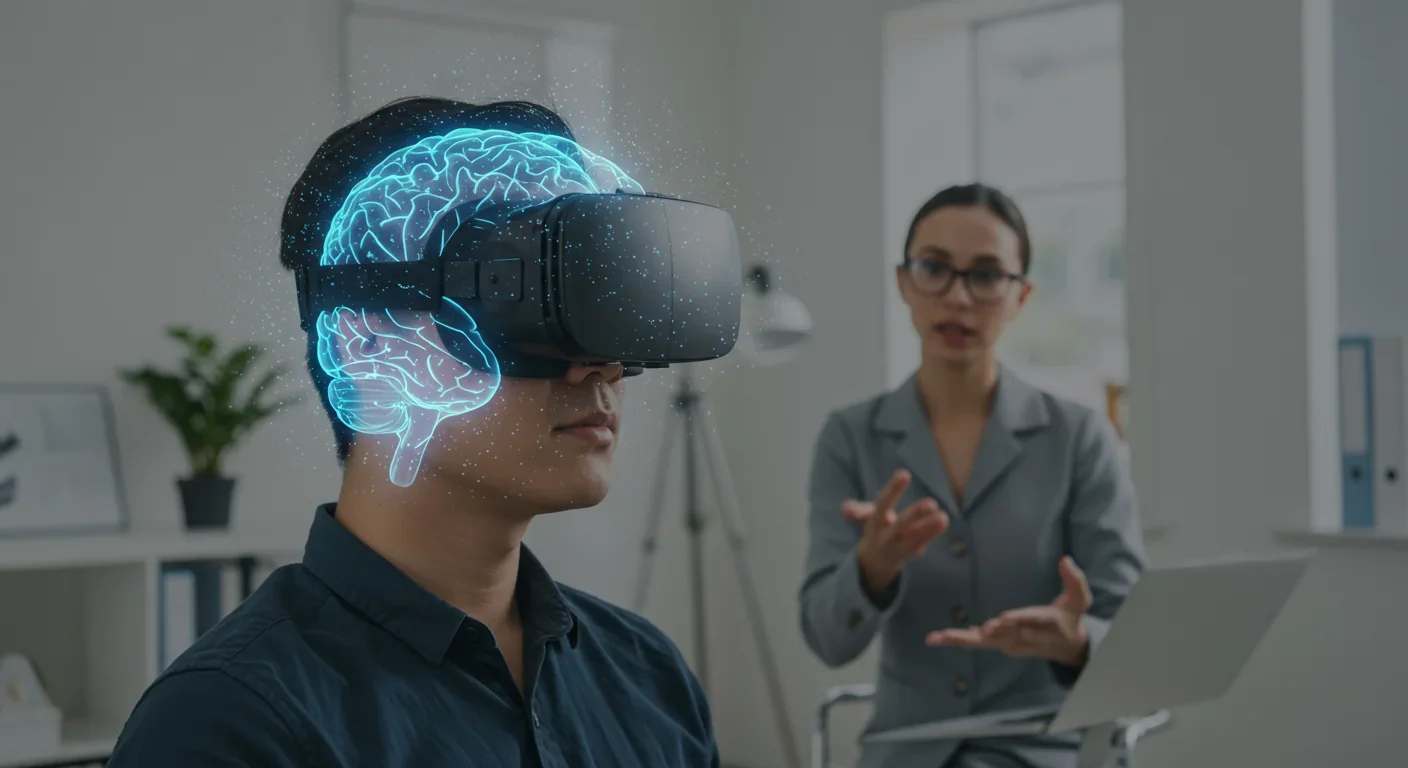Why Your Brain Sees Gods and Ghosts in Random Events

TL;DR: The empathy gap explains why we consistently misread others' emotions and intentions. Understanding how our current emotional state blinds us to others' experiences, and practicing deliberate empathy-building techniques, can transform our relationships and strengthen our mental resilience.

You're convinced your colleague is deliberately ignoring your emails. Your teenager swears they'll never forget how it feels to be grounded, yet months later they're breaking curfew again. A friend promises to help you move, then backs out claiming they "didn't realize how exhausted" they'd be. What's happening isn't malice, it's something neuroscientists call the empathy gap, and it's quietly sabotaging your relationships every single day.
The empathy gap describes our systematic failure to predict or recall how we'll feel in different emotional states. When you're calm, you can't accurately imagine how you'd react while angry. When you're full, you underestimate how hunger will drive your behavior. And critically, when you're judging someone else's actions, you struggle to account for the emotional pressures they're experiencing right now.
The empathy gap exists because your brain processes current emotions very differently from remembered or imagined ones. When researchers study this phenomenon, they find something remarkable: the neural circuits that light up when you experience an emotion barely overlap with those activated when you simply think about that emotion.
Neuroscientists have identified several key brain regions involved in empathy for distress, including the anterior insula and anterior cingulate cortex. These areas help us resonate with others' emotional states. But here's the catch: they work far better when we're in a similar emotional state ourselves. When you're stressed, you can empathize with others who are stressed. When you're relaxed, their stress seems exaggerated.
This creates what behavioral economists call the hot-cold empathy gap. In "hot" states, driven by hunger, anger, fatigue, or desire, we make very different decisions than in "cold" states of calm rationality. Even more problematic: when we're cold, we systematically underestimate how much hot states will influence us or others.
Consider this: studies show that people shopping while hungry buy more food than those who've just eaten. Doctors write different prescriptions depending on whether they've just had a break. Judges grant parole more frequently after meals. The pattern repeats across contexts, our current state blinds us to the power of other states.
Research on perspective-taking reveals that recognizing another person's point of view, thoughts, feelings, and motivations is a skill, not an instinct. We're not automatically good at it. And the empathy gap makes it exponentially harder.
Think about the last time someone canceled plans at the last minute. If you were sitting comfortably at home, their excuse probably seemed weak. But if you'd been the one who'd worked a 12-hour shift, dealt with family drama, and barely slept, you'd understand viscerally why even a casual dinner felt impossible. The gap isn't in the facts, it's in your inability to access the emotional reality of their experience.
This shows up everywhere. In the workplace, managers who've achieved work-life balance struggle to understand why employees feel overwhelmed by workload they once handled. They're no longer in that hot state of career-building urgency, so they can't accurately recall or empathize with it.
Online, the empathy gap becomes a chasm. Without facial expressions, tone, or body language, we're already missing critical emotional cues. Add in the challenges of digital communication, and you've got constant misunderstanding. That email that seemed curt? The sender might have been rushing between meetings, but you read it as hostile.
Research on social media shows that mental health symptoms correlate with problematic social media use. Part of this stems from the empathy gap: we judge others' curated posts without understanding their private struggles, and we imagine others are judging us more harshly than they actually are.
Selman's stages of perspective-taking map how we develop this capacity from childhood through adulthood. Young children assume everyone thinks exactly as they do. By middle childhood, they recognize others have different perspectives but struggle to hold multiple viewpoints simultaneously.
But even adults get stuck. We plateau at a level where we can intellectually acknowledge different perspectives while emotionally remaining trapped in our own. The empathy gap keeps us there, making abstract understanding feel sufficient when actual emotional resonance is missing.
This explains why smart, well-intentioned people still have terrible conflicts. You might logically understand your partner is stressed, but if you're currently calm, you won't really feel what that stress means. So when they snap at you, you're hurt and confused.

The Office: You present an idea in a meeting. Your colleague shoots it down tersely. You assume they're being territorial. Later you learn they'd just gotten terrible news about a project and were barely holding it together. The empathy gap led you to attribute their behavior to personality traits when it was actually driven by temporary emotional state.
Communication gaps between age groups amplify this. Older employees often judge younger colleagues as entitled when they advocate for work-life balance, because they can't accurately recall the emotional reality of starting out in today's economic climate.
Cross-Cultural Collisions: Cultural differences profoundly shape empathy. In individualistic cultures, we empathize by imagining "what would I do in their shoes?" But this approach backfires across cultural lines, because their shoes fit differently.
The empathy gap gets worse when we're trying to understand someone from a different background, because we have less accurate information about what emotional states they might be experiencing. We default to our own reference points, which are precisely the wrong ones.
Digital Minefields: That text that seemed passive-aggressive? Probably wasn't. Without tone and context, we fill in the blanks with our current emotional state. If you're feeling insecure, you'll read criticism into neutral messages.
The empathy gap explains why online arguments escalate so quickly. You're typing your carefully reasoned response from a state of calm certainty. You cannot access the hot state of feeling attacked that the other person is experiencing. So your "reasonable" message lands like gasoline on flames.
Here's the encouraging part: empathy can be strengthened through deliberate practice. Understanding the empathy gap is the first step, because once you know your emotional blindness is predictable, you can compensate for it.
Mirror Neurons and Shared Experience: Your brain has specialized neurons that fire both when you perform an action and when you watch someone else perform it. These mirror neurons help you understand others by simulating their actions in your own motor system.
This mirroring system is our neural foundation for empathy, but it has limits. It works best for actions and emotions we've personally experienced. If you've never felt genuine desperation, your mirror neurons can't fully simulate it. This is why lived experience matters so much for empathy.
Active Listening as Neural Synchrony: When you truly listen to someone, something remarkable happens: your brain waves begin to synchronize with theirs. Effective communication techniques like mindful listening literally align your neural activity with theirs, making empathy neurologically easier.
The key is suspending your own narrative long enough for this synchronization to occur. Most of us are already formulating our response while the other person is talking. This breaks the neural connection and widens the empathy gap.
The Temperature Check: Before reacting to someone's behavior, explicitly ask yourself: "What emotional state might they be in right now?" Don't trust your first answer, it's contaminated by your current state. Push deeper. If they seem irritable, don't stop at "they're in a bad mood." Consider: "They mentioned their kid was sick. They probably slept terribly. They're worried and exhausted."
This exercise won't give you perfect insight, but it reminds you that their internal experience is likely very different from what you can automatically access.
The Future-You Test: When making commitments, remember that future-you will be in a different emotional state. Before committing to that early morning meeting, remember that future-you will be groggy and resentful, not energized like current-you imagines. Before promising to help your friend move, recall the last time you spent a Saturday hauling furniture.
Structured Perspective-Taking: Teachers use this technique with students, but adults need it too. Take a scenario bothering you. Write down what happened from your perspective. Now physically move to a different chair and write it from the other person's perspective. This embodied cognition trick helps your brain access different neural pathways.

For bonus points, write it from a third perspective: a neutral observer who cares about both of you. Often, this reveals that both of you were in hot states, both reacting to immediate pressures, both trapped in your respective empathy gaps.
The Delay Protocol: When you're angry, frustrated, or exhausted, don't make decisions about other people's motives. The empathy gap is at its widest right now. Draft the angry email if you must, but don't send it for 24 hours. By tomorrow, you'll be in a different state, and the offense that seemed so clear will often look more ambiguous.
Empathy Interviews: Greater Good Science Center recommends regular empathy check-ins. Not "how are you?" which triggers automatic "fine" responses. Try "What's been hard this week?" or "What's taking up space in your head?"
These questions signal that you're ready to hear real answers. And the answers give you crucial information to narrow the empathy gap. When you know your colleague is dealing with aging parents, their distraction makes sense. When you know your partner is worried about job security, their stress about small expenses clicks into place.
Empathy actually strengthens mental health, for both the giver and receiver. When you successfully bridge the empathy gap, you're building your own capacity to tolerate difficult emotions and complex situations.
Every time you pause your own narrative to imagine someone else's experience, you're training your brain to hold multiple perspectives. This cognitive flexibility predicts resilience. Positive psychology interventions focused on gratitude and perspective-taking can systematically enhance empathy.
Leading multicultural teams requires extra vigilance about the empathy gap. When working across cultures, you're not just bridging different current emotional states, you're navigating entirely different frameworks for understanding and expressing emotion.
In some cultures, direct expression of disagreement is rude, so people use subtle cues to signal dissent. If you're from a culture that values directness, you'll completely miss these cues. Not because you're not empathetic, but because your empathy is calibrated to your own cultural norms.
The solution isn't to abandon empathy but to pair it with cultural humility. Instead of assuming "I know how they feel," shift to "I want to understand how they feel, and I recognize my understanding will be incomplete." Ask more questions. Make fewer assumptions.
The empathy gap won't disappear. It's wired into how your brain processes emotion and prediction. But understanding it transforms how you navigate relationships. Instead of assuming others are irrational or inconsiderate, you can recognize that you're both operating from different emotional realities that are hard to bridge.
This knowledge is liberating. When someone disappoints you, instead of spiraling into "they don't care about me," you can think "they're probably in a different state than I am, and I'm judging them from my current perspective which doesn't have access to their felt experience."
The people who master this don't do it through superhuman emotional intelligence. They do it through systematic practices: checking in regularly, delaying judgment when emotional, seeking information about others' experiences, and constantly reminding themselves that their immediate emotional read is probably incomplete.
Start small. Today, pick one person who's frustrating you. Instead of rehearsing your grievances, spend five minutes genuinely trying to imagine what their week has been like. What pressures are they under that you can't see? You won't get it exactly right. But the attempt itself narrows the gap, and that makes connection possible where before there was only confusion.
The empathy gap is real and powerful, but it doesn't have to define your relationships. Recognition is the first step. Practice is the path forward. And connection, real connection that bridges different emotional realities, is the reward.

Recent breakthroughs in fusion technology—including 351,000-gauss magnetic fields, AI-driven plasma diagnostics, and net energy gain at the National Ignition Facility—are transforming fusion propulsion from science fiction to engineering frontier. Scientists now have a realistic pathway to accelerate spacecraft to 10% of light speed, enabling a 43-year journey to Alpha Centauri. While challenges remain in miniaturization, neutron management, and sustained operation, the physics barriers have ...

Epigenetic clocks measure DNA methylation patterns to calculate biological age, which predicts disease risk up to 30 years before symptoms appear. Landmark studies show that accelerated epigenetic aging forecasts cardiovascular disease, diabetes, and neurodegeneration with remarkable accuracy. Lifestyle interventions—Mediterranean diet, structured exercise, quality sleep, stress management—can measurably reverse biological aging, reducing epigenetic age by 1-2 years within months. Commercial ...

Data centers consumed 415 terawatt-hours of electricity in 2024 and will nearly double that by 2030, driven by AI's insatiable energy appetite. Despite tech giants' renewable pledges, actual emissions are up to 662% higher than reported due to accounting loopholes. A digital pollution tax—similar to Europe's carbon border tariff—could finally force the industry to invest in efficiency technologies like liquid cooling, waste heat recovery, and time-matched renewable power, transforming volunta...

Humans are hardwired to see invisible agents—gods, ghosts, conspiracies—thanks to the Hyperactive Agency Detection Device (HADD), an evolutionary survival mechanism that favored false alarms over fatal misses. This cognitive bias, rooted in brain regions like the temporoparietal junction and medial prefrontal cortex, generates religious beliefs, animistic worldviews, and conspiracy theories across all cultures. Understanding HADD doesn't eliminate belief, but it helps us recognize when our pa...

The bombardier beetle has perfected a chemical defense system that human engineers are still trying to replicate: a two-chamber micro-combustion engine that mixes hydroquinone and hydrogen peroxide to create explosive 100°C sprays at up to 500 pulses per second, aimed with 270-degree precision. This tiny insect's biochemical marvel is inspiring revolutionary technologies in aerospace propulsion, pharmaceutical delivery, and fire suppression. By 2030, beetle-inspired systems could position sat...

The U.S. faces a catastrophic care worker shortage driven by poverty-level wages, overwhelming burnout, and systemic undervaluation. With 99% of nursing homes hiring and 9.7 million openings projected by 2034, the crisis threatens patient safety, family stability, and economic productivity. Evidence-based solutions—wage reforms, streamlined training, technology integration, and policy enforcement—exist and work, but require sustained political will and cultural recognition that caregiving is ...

Every major AI model was trained on copyrighted text scraped without permission, triggering billion-dollar lawsuits and forcing a reckoning between innovation and creator rights. The future depends on finding balance between transformative AI development and fair compensation for the people whose work fuels it.